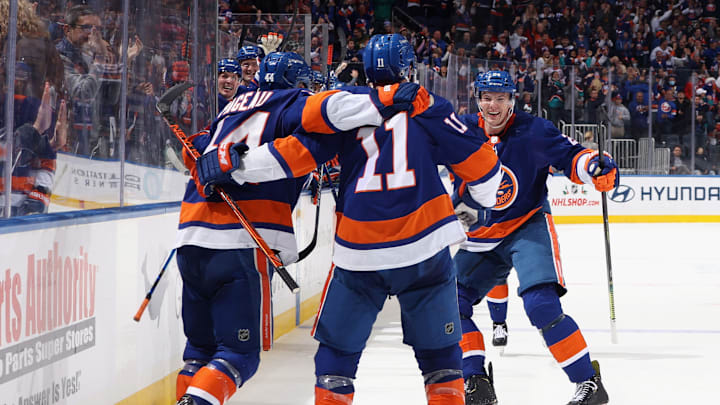Over the last few seasons under head coach, Barry Trotz, the New York Islanders have not shown a successful power play. Not only has the power play failed to be an asset to a contending team, but the units have become less and less aggressive. A man advantage has become a negative with this squad and that will continue to hinder Stanley Cup aspirations.
Since the emergence of a net-front presence like Anders Lee, the Islanders have always relied on putting shots to the net with Lee in front. The creativity was not present and has deteriorated. Having a shot like Ryan Pulock made the shoot from the point for a Lee deflection enhanced.
The last two years, the Islanders deep playoff runs were completed with minimal production from the power play. In fact, the Islanders power play became a momentum swing favoring the opponent.
Islanders Power Play Could Pay Dividends
With even a slight increase in production, it is not outrageous to say the Islanders would have made it to one, if not, two Stanley Cup Finals.
When watching the elite power plays in the NHL it's clear that constant motion within the offensive zone, not only causes opportunities but tires out the defensive unit on the ice.
The Islanders tend to park players in set areas, which causes the defenders to regain energy by staying still. The average puck movement on the power play is passing along the three players at the point. This does not create any new passing lanes or screens in front of the net. In fact, the penalty kill has read the passes, causing turnovers.
The puck turnovers on the power play have been crucial as the Islanders have given up four shorthanded goals. To put things in perspective, the Islanders have ten power-play goals this season.
Things are not right when your power play is more dangerous for the penalty kill than the team with the man advantage.
The first step in the power play is gaining the zone and that has been extremely hard for the power play units. The Islanders have continued to try the drop back pass in the neutral zone to throw off the time of the defense.
The goal is to draw the defenders to the puck carrier and once the puck is dropped back to the trailing player, the entry lanes are more accessible. Unfortunately, the defense reads the play or allows the Islanders to enter the zone and force a quick pass. The problem is that the other Islanders are flat-footed while waiting for the trailing player to gain the blueline.
The ironic part of the Islanders zone entry is that they tend to dump and chase at even strength. This tactic would be more effective if used on the power play and at the very least mix up the defensive preparations.
In an unsurprising fashion, the Islanders are tied for the third to last amount of power-play goals in the NHL with ten.
Although the power play has been atrocious this year, the Islanders are in last place for power-play opportunities. Admittedly this number is skewed as the Islanders have played fewer games than most of the NHL, due to COVID. The power play percentage is fourth to last with 16.1.
Islanders Have Power Play Threat in Wahlstrom
Oliver Wahlstrom leads the group with power four play points and goals. Brock Nelson, who has been injured and out of the lineup since November 21st, is second in power-play goals with two.
Most of the players with pure offensive skill have failed to produce with the man advantage. Zach Parise was brought to the island to provide power play depth. Parise has just one assist on the power play.
This Islanders group will need more from the power play if they hope to return to the playoffs and expect to make some noise.
